
AEM Education and Training
Scope & Guideline
Bridging education and emergency medicine for better patient outcomes.
Introduction
Aims and Scopes
- Emergency Medicine Education and Training:
The journal emphasizes innovative educational strategies and curricula aimed at enhancing the training of emergency medicine professionals, including the integration of simulation-based learning and competency-based education. - Assessment and Evaluation Methods:
Research on assessment tools and methodologies is a core focus, including the development of standardized evaluation frameworks and feedback mechanisms to ensure the quality and effectiveness of training. - Diversity, Equity, and Inclusion:
The journal explores issues related to diversity in emergency medicine, addressing recruitment, retention, and training of underrepresented groups in the field. - Interprofessional Education:
There is a significant emphasis on promoting interprofessional collaboration and education, particularly regarding how different healthcare professionals can work together in emergency settings. - Curriculum Development and Innovation:
The journal publishes studies on the development and implementation of new curricula that adapt to the changing landscape of healthcare and the specific needs of emergency medicine training. - Wellness and Resilience in Medical Training:
Research addressing the mental health, wellness, and burnout of emergency medicine trainees and faculty is increasingly prominent, reflecting a commitment to supporting the well-being of those in the profession.
Trending and Emerging
- Simulation-Based Learning:
The trend towards simulation-based learning continues to grow, with increased publications exploring the effectiveness of various simulation techniques in teaching complex clinical skills and decision-making. - Technology Integration in Education:
There is a marked increase in studies addressing the use of technology, including virtual reality and mobile applications, to enhance educational experiences and improve clinical skills training. - Mental Health and Wellness Initiatives:
Research focusing on mental health, burnout, and wellness programs for emergency medicine trainees is gaining traction, reflecting a growing recognition of the importance of well-being in medical education. - Equity-Centered Medical Education:
Emerging themes related to equity in medical education are increasingly prominent, with a focus on addressing social determinants of health and promoting inclusive practices within emergency medicine training. - Feedback and Assessment Innovation:
Innovations in feedback mechanisms and assessment tools are trending, with a focus on formative assessments that promote continuous learning and improvement among emergency medicine trainees.
Declining or Waning
- Traditional Lecture-Based Education:
There is a noticeable decline in studies emphasizing traditional lecture formats, as the journal increasingly favors active learning strategies and interactive educational methods. - Generalized Curriculum Models:
Research focusing on broad, generalized curriculum models without specific adaptations for emergency medicine contexts is less frequent, with a shift towards tailored and innovative educational approaches. - Basic Procedural Skills Training:
Papers dedicated solely to basic procedural skills training, without the integration of advanced techniques or simulation, are becoming less common, as the focus shifts to more complex, scenario-based training. - Static Assessment Tools:
The use of static assessment tools that do not incorporate feedback or adaptive learning principles is declining, as newer, more dynamic assessment strategies gain popularity. - Non-Interprofessional Perspectives:
Studies focusing exclusively on the perspectives of emergency medicine professionals, without considering interprofessional collaboration, are becoming increasingly rare.
Similar Journals
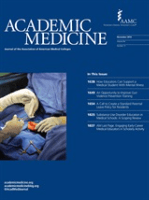
ACADEMIC MEDICINE
Shaping Tomorrow’s Healthcare LeadersACADEMIC MEDICINE is a premier journal published by Lippincott Williams & Wilkins, focusing on the multifaceted realm of medical education and training. Since its inception in 1940, the journal has become an essential resource for researchers, educators, and healthcare professionals dedicated to advancing the field of academic medicine. With an impressive Q1 ranking in both Education and Miscellaneous Medicine categories as of 2023, it ranks among the top publications in its field, reflective of its significant academic impact. The journal is indexed in Scopus, where it holds a commendable position within the 93rd percentile of Social Sciences Education, affirming its influence on contemporary medical education discourse. While not an open-access journal, ACADEMIC MEDICINE is committed to disseminating high-quality research, fostering knowledge exchange, and encouraging innovation in medical training across the globe. It serves as a critical platform for sharing the latest findings and practical insights in medical education, making it an indispensable resource for scholars and practitioners aiming to enhance their academic and clinical expertise.

Journal of the American College of Emergency Physicians Open
Unlocking Vital Insights for Emergency Care ProfessionalsJournal of the American College of Emergency Physicians Open is a prominent Open Access journal published by WILEY that has been committed to advancing the field of emergency medicine since its inception in 2020. As a vital resource for researchers, clinicians, and students, this journal aims to disseminate innovative research findings, clinical guidelines, and educational resources that support the rapidly evolving landscape of emergency care. With a solid Q1 ranking in the emergency medicine category and positioned within the top 25 ranks of Scopus’ emergency medicine listings, the journal ensures high visibility and accessibility for critical research. As an open-access publication, it provides unrestricted access to its content, facilitating knowledge sharing and collaboration among professionals globally. The journal's significant impact on the field is reflected in its growing influence, underlining its relevance as an essential platform for advancing emergency medicine practice and research.
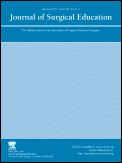
Journal of Surgical Education
Shaping the future of surgical training and practice.The Journal of Surgical Education, published by Elsevier Science Inc., stands at the forefront of academic discourse in the fields of surgery and education. With an impressive impact factor derived from its Q1 rankings in both Education and Surgery as of 2023, this journal is recognized as a leading source of rigorous research and innovative practices that shape surgical training and educational methodologies. Displaying a commitment to advancing the surgical profession, the journal guides its readers through the complexities of surgical education from 2007 to 2024 and beyond, making it an essential resource for educators, practitioners, and researchers. Its Scopus rankings further underscore its influence, with a notable position within the top 89th percentile in Medicine and 85th percentile in Social Sciences, demonstrating its relevance and contribution to both fields. Although it does not offer open access options, the rich content available through traditional subscriptions continues to enrich the knowledge base in surgical education.
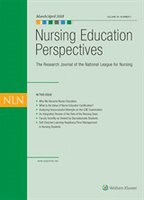
Nursing Education Perspectives
Shaping the Next Generation of Nursing ProfessionalsNursing Education Perspectives is an esteemed peer-reviewed journal published by LIPPINCOTT WILLIAMS & WILKINS, focusing on the vital intersection of education and nursing practice. With an ISSN of 1536-5026 and an E-ISSN of 1943-4685, this journal has been serving the nursing education community since its inception in 2002 and will continue to do so until 2024. In 2023, it achieved a commendable Q2 ranking in Nursing and Q3 in both Education and Miscellaneous Medicine, reflecting its significant contribution to the academic landscape. Although it follows a traditional access model, the journal consistently aims to provide high-quality research, innovative pedagogical strategies, and best practices that can enhance nursing education globally. Given its position within the 49th percentile for General Nursing and Social Sciences, Nursing Education Perspectives is an essential resource for researchers, educators, and practitioners dedicated to advancing nursing training and education.

BMC Medical Education
Transforming medical training through innovative education.BMC Medical Education is a prestigious journal published by BMC, focusing on the intricate interplay between medicine and education. Established in 2001 and based in the United Kingdom, this open access journal aims to enhance the understanding and practice of medical education across the globe. With its impact factor and strong rankings, including a Q1 classification in both Education and Medicine (miscellaneous) categories, it is recognized as a leading platform for innovative research, education strategies, and best practices in medical training. BMC Medical Education is indexed in Scopus, holding an impressive rank of #104 in General Medicine and #279 in Social Sciences - Education, underscoring its significance in the academic community. Researchers, educators, and students in medical and educational fields will find invaluable resources and insights that contribute to the ongoing development of effective medical training programs. Access to this extensive body of work is freely available, fostering a collaborative environment for advancing education in healthcare.
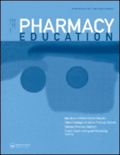
PHARMACY EDUCATION
Transforming knowledge into practice in pharmacy education.PHARMACY EDUCATION, an esteemed journal published by the INTERNATIONAL PHARMACEUTICAL FEDERATION, is dedicated to advancing the field of pharmacy education through high-quality research, reviews, and innovative practices. With an ISSN of 1560-2214 and an E-ISSN of 1477-2701, this journal provides a vital platform for educators, researchers, and professionals to discuss contemporary issues and opportunities within pharmaceutical education. Recognized for its relevance, it holds a Q4 ranking in Education and Q3 in both Pharmaceutical Science and Pharmacy as of 2023. Despite its Scopus rankings reflecting a growing niche, with positions such as 30/45 for Pharmacy in Health Professions, it showcases a commitment to nurturing the next generation of pharmacy practitioners. As a crucial resource for enhancing pharmacy curricula and pedagogical strategies, PHARMACY EDUCATION invites contributions from those dedicated to enriching educational methodologies and promoting excellence in pharmaceutical training. This journal plays an essential role in bridging academic research and practical application, encouraging the ongoing evolution in pharmacy education across the globe.
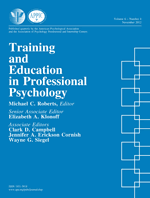
Training and Education in Professional Psychology
Fostering Excellence in Psychological TrainingTraining and Education in Professional Psychology, published by the Educational Publishing Foundation under the auspices of the American Psychological Association, serves as a vital resource in the realm of psychological education and professional training. Founded in 2007, this esteemed journal has established itself as a premier outlet for innovative research, practical applications, and advancements in psychology education, reflecting its strong standing with a Q2 rating in both Education and Psychology (miscellaneous) categories. With a notable Scopus ranking, placing it in the 75th percentile for Social Sciences - Education and the 66th percentile for General Psychology, it is essential reading for educators, practitioners, and students aiming to deepen their understanding of professional psychologist training and education methodologies. Although the journal is not open access, its contributions to the field are profound, equipping professionals with the insights necessary for fostering the next generation of psychologists.

Medical Science Educator
Pioneering research for the next generation of medical educators.Medical Science Educator, published by SpringerNature, is an esteemed journal committed to advancing the intersection of educational methodologies and medical science. With a significant impact in its field, this journal holds a Q2 ranking in both Education and Medicine (miscellaneous) categories as of 2023, reflecting its dedication to high-quality research and scholarly dialogue. Operating in a digital format, the journal uniquely facilitates access to pivotal studies from its inception in 2011 until 2024, fostering innovation in medical education. The latest rankings highlight its credibility, placing it at the 63rd percentile in Social Sciences - Education and the 56th percentile in Medicine - Medicine (miscellaneous) within Scopus. This platform serves as an invaluable resource for educators, researchers, and practitioners aiming to enhance teaching practices and shape the future of medical education.
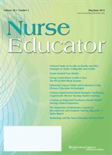
Nurse Educator
Advancing Nursing Education with Impactful Insights.Nurse Educator, published by Lippincott Williams & Wilkins, serves as a pivotal resource in the field of nursing education and practice. With an ISSN of 0363-3624 and an E-ISSN of 1538-9855, this esteemed journal has been contributing to the development of nursing professionals since 1976 and is recognized for its impactful articles, reflected in its 2023 Q2 category rankings across various nursing and educational domains. Nestled within the competitive landscape of academic publishing in the United States, its substantial Scopus ranking underscores its significance, particularly in Nursing Fundamentals and Skills (Rank #7/15) and general nursing fields (Rank #52/139). The journal's scope encompasses essential topics pertinent to nurse educators, including pedagogy, clinical practice, and exam preparation strategies, ultimately aiming to enhance nursing education and improve patient care outcomes. By providing an engaging platform for innovative research and best practices, Nurse Educator stands as an essential resource for researchers, educators, and students committed to advancing the nursing profession.

International Journal of Medical Education
Sharing knowledge to shape the future of healthcare education.The International Journal of Medical Education, with ISSN 2042-6372, stands as a pivotal publication in the field of medical education, fostering innovation and critical discourse among educators, researchers, and practitioners worldwide. Published by INT JOURNAL MEDICAL EDUCATION-IJML in the United Kingdom, this journal has carved a niche for itself since its inception in 2011, achieving a commendable Q2 ranking in the 2023 category of Medicine (miscellaneous) as well as securing a position in the top half of Scopus ranks (Rank #142/398, 64th percentile). The journal aims to enhance the quality of medical training through the dissemination of high-quality research, reviews, and insightful perspectives, serving as a valuable resource for those eager to advance medical education practices. By offering an open-access format, the journal ensures that vital knowledge is accessible to a broader audience, promoting the sharing of ideas and collaborative efforts in the evolving landscape of medical education.